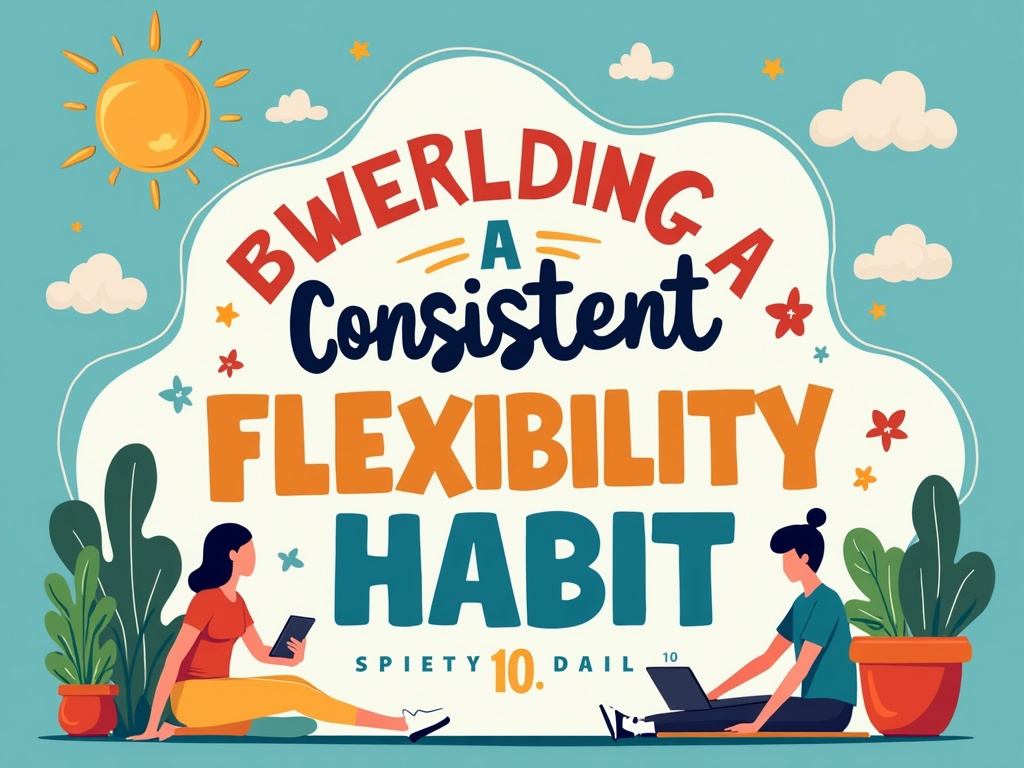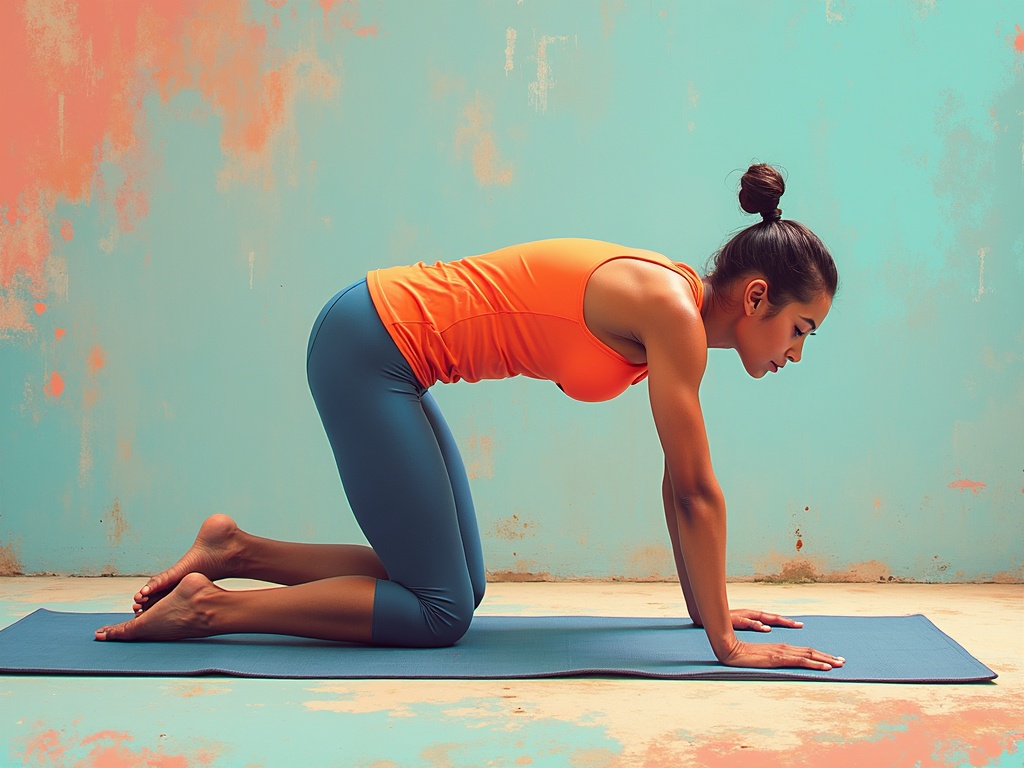Building a Consistent Flexibility Habit: The Ultimate Guide
Imagine waking up each morning without the familiar stiffness in your back, effortlessly reaching for that top shelf, or experiencing newfound freedom in your movements. This isn't just a pipe dream; it's the reality of those who've cultivated a consistent flexibility habit. But in a world that demands so much of our time and energy, how do we carve out space for something that often feels like an afterthought? This guide provides a comprehensive roadmap, transforming flexibility from a sporadic activity into a deeply ingrained, beneficial habit.
Understanding the Importance of Flexibility
Flexibility is more than just being able to touch your toes. It's a cornerstone of overall physical health and well-being, influencing everything from posture to athletic performance. Let's delve into why building a consistent flexibility habit is so crucial:
Improved Range of Motion
As we age, our joints naturally become stiffer, limiting our range of motion. Regular stretching and flexibility exercises can counteract this process, keeping your joints lubricated and your movements fluid.
Reduced Risk of Injury
Tight muscles are more prone to strains and tears. Enhanced flexibility increases muscle elasticity, making them more resilient and less susceptible to injury during physical activity. This is especially vital for athletes or anyone engaging in strenuous exercise.
Pain Management
Flexibility exercises can alleviate chronic pain, particularly in the back, neck, and shoulders. Stretching helps release tension in these areas, improving blood flow and reducing inflammation. Many people find relief from conditions like sciatica or arthritis through consistent flexibility work.
Enhanced Posture
Poor posture often stems from muscle imbalances and tightness. By stretching tight muscles and strengthening weak ones, you can improve your posture, alleviating strain on your spine and reducing the risk of back pain.
Stress Reduction
Flexibility exercises, such as yoga and tai chi, incorporate deep breathing and mindfulness, which can help calm the nervous system and reduce stress levels. Stretching releases physical tension, which often translates into mental relaxation.
Laying the Foundation for a Consistent Habit
Building any habit, including a flexibility routine, requires a strategic approach. Here's how to set yourself up for success:
Start Small and Be Realistic
Don't try to overhaul your entire routine overnight. Begin with just 5-10 minutes of stretching each day. Choose a few simple stretches that target major muscle groups, and gradually increase the duration and intensity as you become more flexible.
Set Specific and Measurable Goals
Vague goals like become more flexible are difficult to track and achieve. Instead, set specific, measurable, achievable, relevant, and time-bound (SMART) goals. For example, I will be able to touch my toes in one month or I will hold each stretch for 30 seconds by the end of the week.
Find an Accountability Partner
Having someone to share your goals with and check in on your progress can significantly increase your chances of success. Find a friend, family member, or colleague who is also interested in improving their flexibility and support each other along the way. Alternatively, consider joining a flexibility-focused online community or class.
Schedule It In
Treat your flexibility routine like any other important appointment. Schedule it into your calendar and protect that time. Whether it's first thing in the morning, during your lunch break, or before bed, consistency is key. Consider setting reminders and alarms to stay on track.
Choose Activities You Enjoy
If you dread your flexibility routine, you're less likely to stick with it. Explore different types of flexibility exercises, such as yoga, Pilates, tai chi, or simple stretching. Find activities that you find enjoyable and that fit your lifestyle.
Creating Your Personalized Flexibility Routine
There's no one-size-fits-all approach to flexibility training. A personalized routine should consider your individual needs, goals, and limitations. Here's how to design a routine that works for you:
Assess Your Current Flexibility Levels
Before starting any new exercise program, it's essential to assess your current flexibility levels. This will help you identify areas where you need to focus your efforts and track your progress over time. Perform simple tests, such as the sit-and-reach test, shoulder flexibility test, and hamstring flexibility test.
Target Major Muscle Groups
Your flexibility routine should target all major muscle groups, including the legs, hips, back, chest, shoulders, and neck. Include a variety of stretches that address different types of flexibility, such as static, dynamic, and PNF stretching.
Sample Stretches for a Full-Body Routine:
- Hamstring Stretch: Sit on the floor with your legs extended. Reach towards your toes, keeping your back straight.
- Quadriceps Stretch: Stand holding onto a chair or wall for balance. Grab your ankle and pull your heel towards your glutes.
- Hip Flexor Stretch: Kneel on one knee, with the other foot flat on the ground in front of you. Gently push your hips forward.
- Chest Stretch: Stand with your arms extended out to the sides, palms facing forward. Gently pull your shoulders back.
- Shoulder Stretch: Reach one arm across your body and gently pull it towards you with your other arm.
- Neck Stretch: Gently tilt your head to one side, bringing your ear towards your shoulder.
Progress Gradually
As you become more flexible, gradually increase the intensity and duration of your stretches. You can also try more advanced stretches or flexibility exercises. Listen to your body and avoid pushing yourself too hard, especially in the beginning.
Overcoming Challenges and Staying Consistent
Even with the best intentions, building a consistent flexibility habit can be challenging. Here are some common obstacles and how to overcome them:
Lack of Time
This is one of the most common excuses for not exercising. However, even just a few minutes of stretching each day can make a difference. Break up your flexibility routine into smaller chunks throughout the day. Stretch while you're watching TV, waiting for your coffee to brew, or during your lunch break.
Motivation
It's normal to experience fluctuations in motivation. To stay motivated, focus on the benefits of flexibility, such as reduced pain, improved posture, and increased energy levels. Reward yourself for reaching your goals and celebrate your progress along the way. Listen to upbeat music or a podcast while you stretch to make it more enjoyable.
Plateaus
It's common to experience plateaus in your flexibility progress. When this happens, don't get discouraged. Instead, try varying your routine by adding new stretches, increasing the duration or intensity of your stretches, or trying a different type of flexibility exercise, such as yoga or Pilates.
Injuries
If you experience an injury, stop stretching immediately and consult with a doctor or physical therapist. Once you've recovered, gradually ease back into your flexibility routine, starting with gentle stretches and avoiding any activities that aggravate your injury.
Making Flexibility a Lifelong Habit
Building a consistent flexibility habit isn't just about reaching a certain level of flexibility; it's about making flexibility a lifelong part of your healthy lifestyle. Here are some tips for maintaining your flexibility gains and keeping your routine going for years to come:
Listen to Your Body
Pay attention to your body's signals and adjust your routine accordingly. Some days you may feel more flexible than others, and that's okay. Don't push yourself too hard, especially if you're feeling tired or sore. Rest and recovery are essential for maintaining flexibility and preventing injuries.
Stay Consistent, Even When You're Busy
Life can get hectic, but it's important to prioritize your flexibility routine, even when you're busy. If you can't fit in a full stretching session, do a few key stretches to maintain your flexibility. Consistency is more important than duration.
Make It Social
Exercising with others can make it more enjoyable and help you stay motivated. Join a yoga class, stretch with a friend, or participate in a flexibility challenge with your colleagues. Sharing your progress and supporting others can help you stay on track.
Reassess and Adjust Your Goals
As your flexibility improves, reassess your goals and set new challenges. This will help you stay motivated and continue to progress. Consider setting goals related to specific activities, such as being able to do a certain yoga pose or participate in a particular sport.
Beyond Stretching: Complementary Practices
While stretching is the most common way to improve flexibility, other practices can complement your routine and enhance your results:
Foam Rolling
Foam rolling is a self-myofascial release technique that can help release tension in tight muscles and improve flexibility. Use a foam roller to massage major muscle groups, such as the legs, back, and hips.
Massage Therapy
Massage therapy can also help release muscle tension and improve flexibility. A massage therapist can target specific areas of tightness and use various techniques to release knots and adhesions.
Yoga and Pilates
Yoga and Pilates are excellent ways to improve flexibility, strength, and balance. These practices incorporate a variety of poses and movements that stretch and strengthen muscles, improving overall flexibility and range of motion.
The Rewarding Journey to Enhanced Flexibility
Building a consistent flexibility habit is a journey, not a destination. There will be ups and downs along the way, but the rewards are well worth the effort. By incorporating flexibility exercises into your daily routine, you can improve your overall health and well-being, reduce your risk of injury, and enjoy a greater range of motion and freedom of movement. So, start small, be consistent, and enjoy the journey to a more flexible and healthier you. Embrace the process, celebrate your progress, and make flexibility a lifelong habit.


